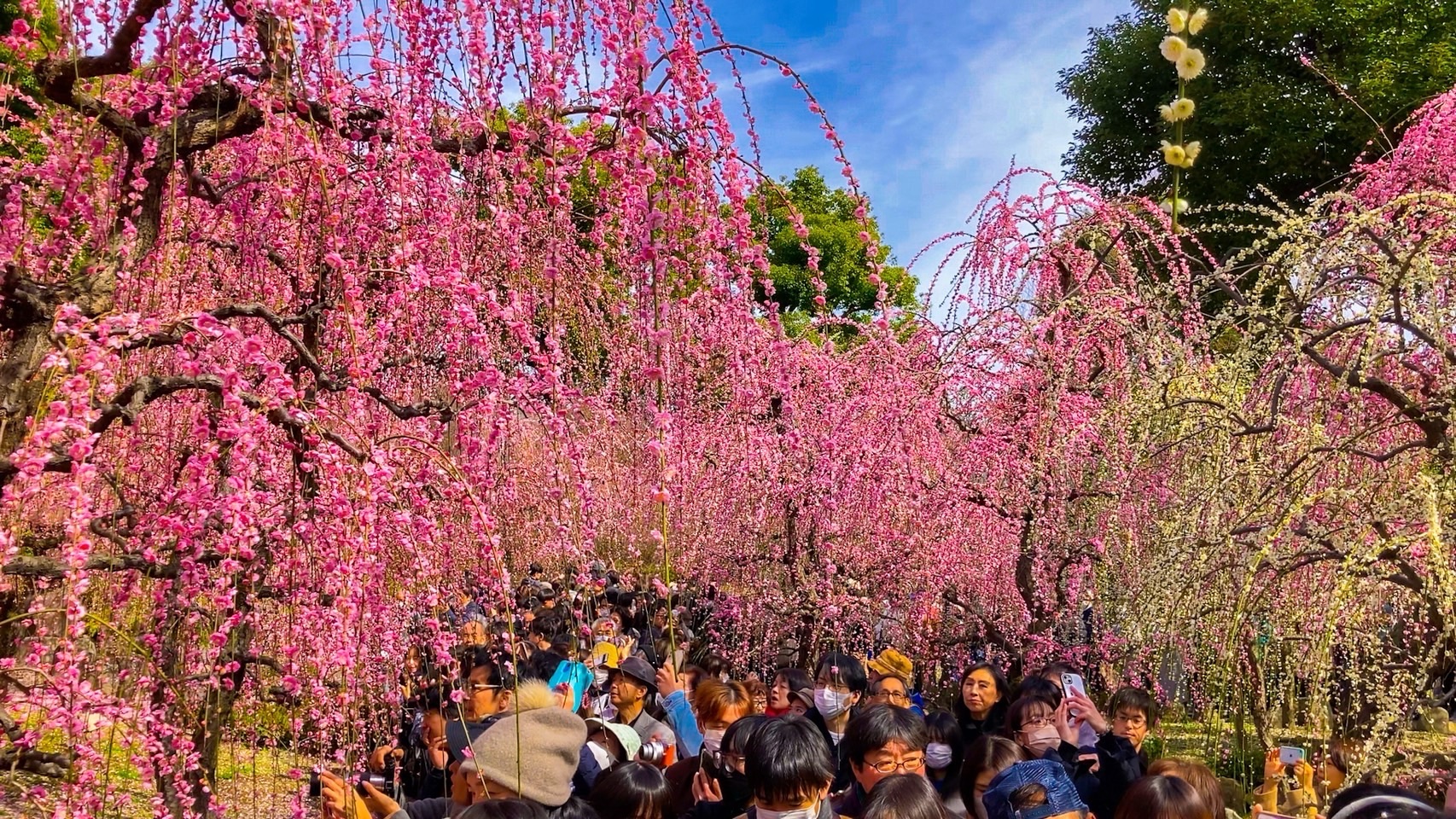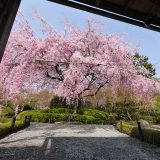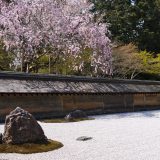

Table of Contents
Weeping Plum Blossom at Jounangu Shrine





Latest images of weeping plum and camellia
Images of weeping plum trees and camellias in full bloom in the grounds of Jounangu Shrine. (Taken on March 2, 2024)





Basic Event Information
| Events | Weeping Plum and Camellia Festival (Shidare Ume to Tsubaki Matsuri) |
| Location | Jonan Shrine |
| Schedule | Sunday, February 18 – Friday, March 22, 2024 |
| Hours of visit | 9:00-16:30 (registration closes at 16:00) |
| Admission | Adults (junior high school students and older): 1,000 yen, elementary school students: 600 yen |
| TEL: 075-623-0846 | 075-623-0846 |
| Official website | https://www.jonangu.com/shidareume.html |
| Prohibited items | Eating and drinking Use of tripods, monopods, stepladders, and selfie sticks Sketching Pets (except service dogs and guide dogs) |
History of weeping ume
The ume plum is native to China and is said to have come to Japan in the Nara period (710-794), and many poems about the ume plum are written in the Manyoshu (Anthology of Myriad Leaves). Ume trees are broadly classified into two types, the “fruit ume” and the “flowering ume,” the latter of which is for enjoying the flowers, fragrance, trunk shape, and branching.
In the “Gojikigo Waka Shu,” there are poems praising the fragrance of ume, cherry blossoms, and the beauty of willow branches, which represent the ideal form of these flowers. During the Edo period (1603-1868), horticulture flourished and breeding of flowering plums was promoted, and descriptions of “shidare-ume” can be found. In particular, a document from 1710 specifically describes weeping ume, and it is thought that the ideal flower form of Nakahara Chitoki came to be widely recognized.
Enjoying the Changing Shidare Ume
社殿の西に広がる「春の山」では、150本のしだれ梅がうすべに色や紅白の花を装い、春の訪れを告げます。 Depending on the degree of growth of the weeping plum trees, there are three different ways to enjoy the changing scenery of weeping plum blossoms: ” tanbai,” ” kanbai,” and “sekibai,” or “sparing.
Exploring the Plum Blossom
Period: Beginning of blooming to half-blooming
Visitors can feel the arrival of springwhile looking for plum trees at the beginning of blooming.
Plum trees with lively dark petals at the beginning of blooming. During this season, there are relatively few visitors, so you can enjoy viewing the ume blossoms at a leisurely pace.
Kanbai (plum blossom viewing)
Period: Seven-part bloom to full bloom
Admire the breathtaking view of 150 weeping plum trees in full bloom.
The 150 weeping plum trees in full bloom in the precincts of the temple at their best are a sight to behold. Around the entrance to “Haru no Yama,” the view is breathtaking.
Spare Plum Blossoms
Period: Beginning of fall
While enjoying the falling plum blossoms, visitors wait for the cherry blossoms to bloom in spring.
During the few days when the blossoms are falling, visitors can enjoy a “carpet of petals. It can be seen on the day after the cherry blossoms are in full bloom and the day after a windy day or rain.
Camellias in full bloom in the garden
About 400 camellias of 150 varieties bloom from the entrance of the shrine garden to Haru-no-Yama and Heian-no-niwa, and visitors can enjoy their various appearances from September to the end of March.
How to get to Jonan-gu Palace
Jonan-gu Shrine is easily accessible by public transportation.
- 12-minute walk from Takeda Station on the Subway Karasuma Line and Kintetsu Kyoto Line
- 12-minute walk from Takeda Station on the Kintetsu and Kyoto Lines
- 1 min. walk from ” Jonannomiya-mae ” city bus stop
- 2 minutes on foot from Jonangyu (city bus)
- 2 min. walk from ” Jonangu-michi ” city bus stop
- 3 min. walk from Jonangu East Exit (city bus)
The latest video of “Shidare Ume and Camellia Festival
A video of the “Weeping Plum and Camellia Festival” taken in late February 2024 is available on YouTube. You can enjoy the weeping plum blossoms at their best, and the camellias with “fallen camellias”.
Please take a look.



